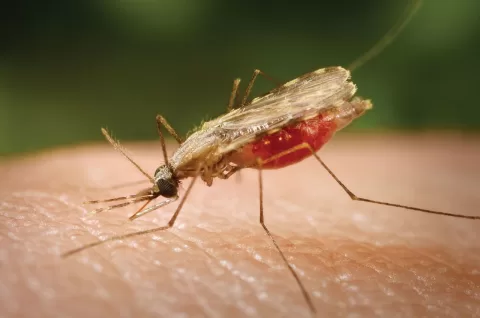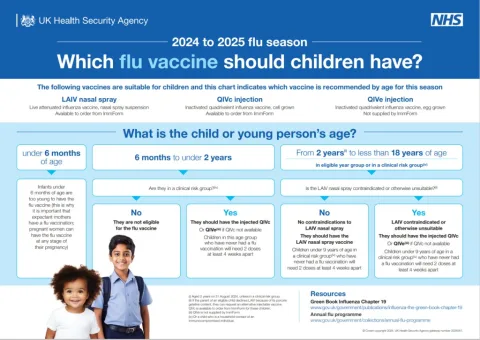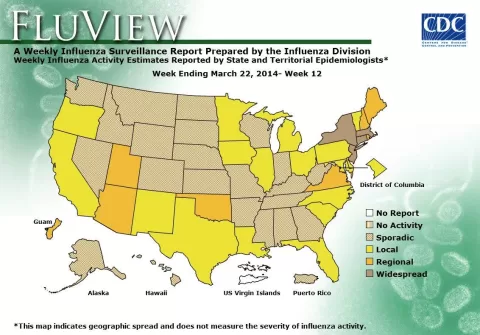STD diagnosis trends over the past few years paint a concerning picture of public health in the United States. A report from Fair Health reveals that STD cases rose by nearly 5% from 2020 to 2023, with the most alarming increases observed among older adults. This rising tide of sexually transmitted infections (STIs) emphasizes the need for awareness and preventative care, particularly among populations often overlooked in the conversation about STDs. The statistics highlight a 23.8% surge in diagnoses for individuals aged 65 and older, underscoring an epidemic that spans generations. As we delve into these STD diagnosis trends, it becomes crucial to understand the implications not just for those most affected, but for our society at large.
In recent years, the landscape of sexually transmitted diseases has shifted dramatically, revealing important insights into infection rates across various demographics. The growing prevalence of STIs among older adults highlights a critical public health issue, with findings indicating significant increases in conditions such as syphilis and gonorrhea. Alternative terms like sexually transmitted infections and STD diagnoses are becoming prevalent in discussions around health trends, especially as medical professionals examine the underlying factors contributing to these changes. By exploring these patterns through an analytical lens, we can better comprehend the rise in infection rates and develop targeted strategies to address them effectively. Such an approach will ensure informed conversations and timely interventions to curb the spread of these preventable diseases.
Understanding STD Diagnosis Trends: Key Findings
Recent data from Fair Health highlights a troubling trend in the rise of sexually transmitted infections (STIs) in the United States. Between 2020 and 2023, STD diagnoses increased by approximately 4.8%, signaling a critical need for awareness and preventive measures. A particularly significant finding from the study is the 23.8% rise in STD cases among older adults aged 65 and older, emphasizing a demographic often overlooked in sexual health conversations. This trend raises questions about the sexual health education available to older populations and the accessibility of preventive care.
The report also indicated notable increases in various age groups, with individuals aged 55 to 64 witnessing a 16.2% increase, and those aged 35 to 44 exhibiting an 8.6% rise in diagnoses. Conversely, younger populations, particularly those aged 19 to 24, experienced a decrease of 6.6%. These statistics serve as a wake-up call regarding the necessity to focus not only on younger demographics who are traditionally associated with STIs but also on older adults who may be neglecting their sexual health.
The Impact of Age on STD Statistics
Age demographics play a crucial role in understanding the landscape of STDs and STIs. The increase in diagnoses among older adults, particularly those aged 65 and over, unveils a significant shift in sexual behavior and health awareness in this age group. Factors such as long-term relationships, increased singlehood among aging populations, and possibly a lack of sufficient education on sexual health for older adults could contribute to this growing trend. There is a pressing need for public health strategies that specifically address the changing sexual health landscape among older adults.
In addition to the alarming rise in diagnoses among older adults, the study reveals that individuals aged 55 to 64 also exhibit stark increases in STD cases. Such findings indicate that educational initiatives and preventive measures must be tailored to engage these age groups actively, dismantling stigmas surrounding sexual health in older demographics. In doing so, healthcare providers can foster a safe environment for discussions around STDs, encouraging testing and treatment without the fear of judgment.
Key STDs on the Rise: Statistics You Should Know
The study conducted by Fair Health outlines concerning increases in specific STDs, notably syphilis, gonorrhea, and HIV/AIDS. Among these, syphilis diagnoses surged by an alarming 29.4%, while gonorrhea diagnoses rose by 16.8%. This trend is particularly alarming for public health officials, who must now address not only the increasing prevalence of these diseases but also the societal perceptions surrounding them. With the dramatic rise in syphilis diagnoses, we can expect a greater focus on screening and treatment options to manage and mitigate the outbreak.
Additionally, the rise of HIV/AIDS underscores an essential need for ongoing education and access to healthcare services. Though advancements in treatment options have improved lives, the increase in new cases highlights the critical need for sustained awareness and preventive education. Public health campaigns must adapt to the changing landscape of STIs, ensuring that individuals of all ages, particularly those within high-risk demographics, are informed and equipped to manage their sexual health effectively.
Trends in STI Diagnoses Among Different Age Groups
The alarming trend of rising STD cases is vitally important when looking at various age groups. As reported by Fair Health, the most substantial increase—32.2%—was seen in human papillomavirus (HPV) diagnoses among individuals aged 65 and older. This statistic not only reveals a notable change in the age profile of STI cases but also calls into question how well the older demographic understands the risks associated with STIs. This highlights a critical gap in sexual health education that ought to be addressed.
The finding that younger individuals aged 19 to 24 experienced a decrease in diagnoses could suggest effective educational campaigns targeting sexually active youth. However, decreased numbers among younger populations should not overshadow the escalating cases among older adults. Public health leaders need to harness these insights to orchestrate effective communication strategies relevant to age-specific groups, ensuring that all individuals receive the education necessary to prevent the further spread of STIs.
The Role of Public Health Initiatives in Combating STDs
Public health initiatives are crucial in combating the rising trends of STDs across all age groups. The increase of STD cases, particularly in older adults, underscores the necessity for targeted interventions that address the unique needs of this population. Health organizations must implement comprehensive community outreach programs, including awareness campaigns and affordable testing services. Such initiatives can play a pivotal role in reducing stigma and encouraging individuals to engage in regular sexual health screenings.
Moreover, educational programs need to shift their focus to include information tailored for older adults, providing resources that address both the prevention and treatment of STDs. By creating an environment where residents feel empowered to discuss sexual health openly, we can expect a decline in STD prevalence. These health measures not only enhance individual well-being but also contribute to overall community health, reducing the burden of STIs on healthcare systems.
Challenges in STD Awareness and Education
Despite rising STD cases, challenges still exist in raising awareness and educating the public about sexually transmitted infections. Stigma surrounding STIs can deter individuals from seeking the help they need, especially among older adults who may not feel comfortable discussing their sexual health openly. Addressing these societal factors is essential for fostering an environment where individuals can seek treatment without fear of judgment or alienation.
Additionally, a lack of tailored educational initiatives targeting older demographics exacerbates the issue, as many may not have received comprehensive sexual education in their youth. Improved strategies are essential to engage this audience effectively, potentially using multimodal approaches that involve community leaders, healthcare providers, and social media outreach to disseminate relevant information. Through increased access to accurate knowledge, older adults can make informed health decisions, positively influencing STI statistics.
Understanding the Societal Impact of Increased STDs
The rise in STD cases has far-reaching societal implications that extend beyond personal health. With older adults increasingly affected, there is a need for societal reckoning about sexual health and aging. Public perceptions of seniors often overlook their sexual rights and needs, which can lead to inadequacies in both healthcare provision and social support for this demographic.
Furthermore, the increase in STDs, particularly in older adults, may strain healthcare resources and impact public health policy. Policymakers must recognize the need for enhanced screening protocols, treatment options, and educational resources aimed specifically at these populations. Recognizing the broader social impacts of rising STD statistics will support the implementation of beneficial health strategies, ultimately leading to improved outcomes for aging communities.
Exploring Syphilis, Gonorrhea, and Other Infections
The rapid rise in syphilis and gonorrhea diagnoses presents a serious public health crisis that demands urgent attention. Female patients, in particular, have seen shocking increases in syphilis cases, which raises concerns about the long-term effects on reproductive health and the potential for congenital syphilis. Awareness campaigns must address these trends by providing educational resources to at-risk groups, promoting testing and preventative measures that can effectively curb the spread of these infections.
Similarly, gonorrhea has seen a whopping increase among male patients, prompting the need for revisited treatment strategies and public awareness efforts. Educational campaigns should advocate regular screenings and inform individuals about safe sexual practices. By equipping the public with factual information, we stand a better chance of controlling the spread of these infections and supporting overall sexual health.
The Importance of Regular Screening and Preventive Care
In light of increasing STD diagnosis trends, regular screenings and preventive care have never been more critical. Annual check-ups that include STI testing are vital for early detection, which is essential for effective treatment. As statistics reveal growing rates of STDs among older adults, it is imperative that this population understands the importance of regular health check-ups to manage their sexual health proactively.
Healthcare providers play a pivotal role in promoting standard screening practices among their patients. By creating a culture that normalizes STD testing and discussing sexual health openly, physicians can lead initiatives to combat the rising HIV/AIDS, syphilis, and gonorrhea cases. Prevention-focused healthcare strategies, alongside education, can greatly reduce the incidence of STDs, and healthcare systems must prioritize these efforts to ensure a healthier future.
Frequently Asked Questions
What trends are observed in STD diagnoses from the Fair Health report?
According to the Fair Health report, STD diagnoses in the U.S. rose by 4.8% from 2020 to 2023. Particularly, there was a significant 23.8% increase in cases among older adults aged 65 and older, indicating a concerning trend in sexually transmitted infections (STIs) within this demographic.
How have sexually transmitted infections (STIs) affected older adults in recent years?
Recent data highlights a notable uptick in sexually transmitted infections (STIs) among older adults, with a 23.8% increase in diagnoses among individuals aged 65 and older from 2020 to 2023. This trend points to a growing public health concern as older adults may be at higher risk for STIs.
What are the statistics on STI cases for different age groups?
The Fair Health report reveals varied statistics on STI diagnoses: individuals aged 65 and older saw a 23.8% increase, followed by a 16.2% rise in those aged 55 to 64. Other age groups also experienced trends, such as an 8.6% increase for ages 35 to 44, while younger populations, specifically those aged 19 to 24, noted a decline of 6.6%.
Which STDs have the highest growth in diagnoses according to recent STI statistics?
Recent STI statistics show that syphilis diagnoses surged by 29.4%, gonorrhea by 16.8%, and HIV/AIDS by 14.1% from 2020 to 2023. These increases highlight a worrying trend in the prevalence of sexually transmitted diseases across various populations.
What could be contributing to the rising STD diagnosis trends reported by Fair Health?
Several factors may contribute to the rising STD diagnosis trends observed in the Fair Health report, including changing societal norms regarding sexual health, lack of awareness about STIs among older adults, and insufficient access to preventive healthcare and education, particularly for older populations.
How can public health initiatives address the increase in STD cases among older adults?
Public health initiatives can combat the increase in STD cases among older adults by promoting educational programs about safe sexual practices, increasing access to regular screening and healthcare services, and creating awareness campaigns that specifically target the needs and health education of older populations.
What is the significance of the rise in HPVs which saw a 32.2% increase among older adults?
The significant rise in HPV diagnoses, especially the 32.2% increase among individuals aged 65 and older, underscores the need for targeted health interventions. HPV can lead to serious health issues, and this trend illustrates a critical gap in awareness and prevention strategies for sexually transmitted infections.
| Key Point | Statistics |
|---|---|
| Overall increase in STD cases from 2020 to 2023 | 4.8% increase in STD cases overall |
| Increase among older adults | 23.8% increase in individuals aged 65 and older |
| Age group increases (2020-2023) | 16.2% (ages 55-64), 8.6% (ages 35-44), 7.6% (ages 45-54) |
| Decreases in younger populations | 6.6% decrease (ages 19-24), 3.8% decrease (under 18) |
| Fastest growing STDs | 29.4% (syphilis), 16.8% (gonorrhea), 14.1% (HIV/AIDS) |
| HPV increases | 32.2% (ages 65+), 21.9% (ages 55-64), but decreases in younger groups |
| Gender differences in STD diagnoses | 22.9% increase in syphilis among males, 46.5% among females; 59.2% increase in gonorrhea among males, 19.3% decrease among females |
Summary
STD diagnosis trends show a concerning rise in sexually transmitted diseases across various age groups, particularly among older adults. The latest data indicates a 4.8% increase in diagnoses from 2020 to 2023, with a significant 23.8% rise in individuals aged 65 and older. Notably, STDs like syphilis, gonorrhea, and HIV are experiencing faster growth rates, reflecting an urgent need for public health strategies to address this alarming trend. Overall, these insights from Fair Health’s comprehensive database should guide further research and inform healthcare policies.
The content provided on this blog (e.g., symptom descriptions, health tips, or general advice) is for informational purposes only and is not a substitute for professional medical advice, diagnosis, or treatment. Always seek the guidance of your physician or other qualified healthcare provider with any questions you may have regarding a medical condition. Never disregard professional medical advice or delay seeking it because of something you have read on this website. If you believe you may have a medical emergency, call your doctor or emergency services immediately. Reliance on any information provided by this blog is solely at your own risk.







